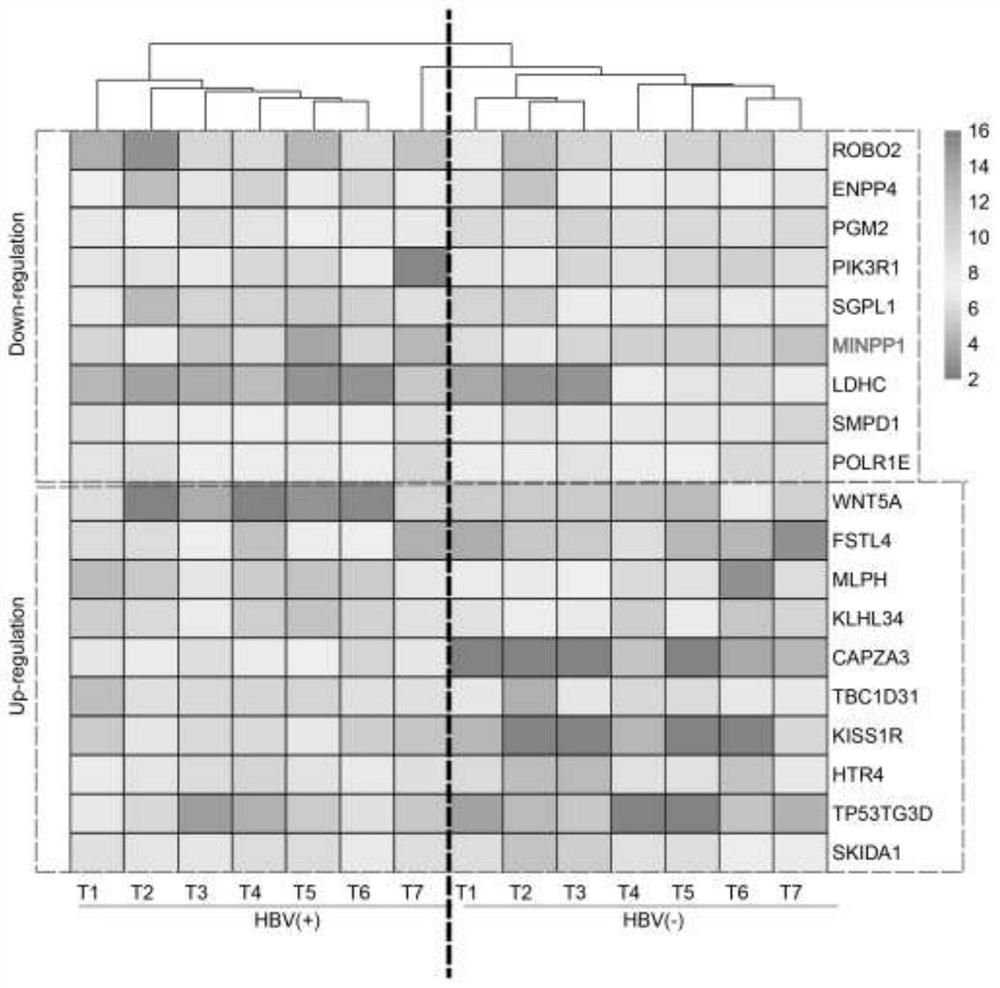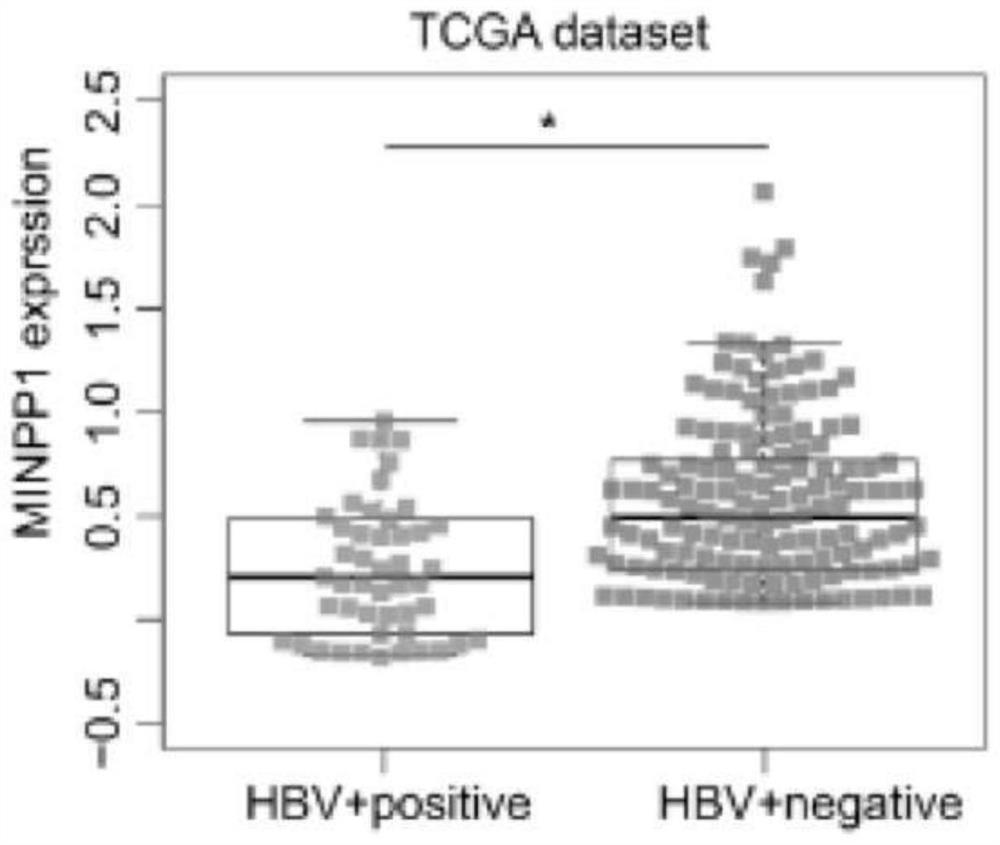Use of polyphosphoinositide phosphatase 1 as a target molecule
An overexpression and gene technology, applied in the field of polyphosphoinositide phosphatase 1 as a target molecule, can solve the problems that there are no related reports and no related research on the regulatory mechanism, and achieve the goal of inhibiting growth and invasion and inhibiting proliferation Effect
- Summary
- Abstract
- Description
- Claims
- Application Information
AI Technical Summary
Problems solved by technology
Method used
Image
Examples
Embodiment 1
[0037] Example 1: Determination of the expression of MINPP1 in HBV-related and non-HBV-related hepatocellular carcinoma
[0038] Tumor tissues from 24 patients with HBV-related HCC and 24 patients with non-HBV-related HCC were collected through surgical resection, and the specimens were collected and placed in a -80°C refrigerator for later use. When extracting the RNA in the tissue, take the sample out of the low-temperature refrigerator and thaw it, add 1mL Trizol reagent per 100mg, homogenize with an electric homogenizer, and let it stand for 5min after the end. Add 200 μL of chloroform to the sample, shake vigorously, let it stand for 5 minutes, and centrifuge at 12,000 rpm for 15 minutes in a centrifuge precooled to 4°C. After centrifugation, the sample can be separated. Transfer the upper aqueous phase to a new centrifuge tube, add an equal volume of isopropanol and mix gently, and let it stand at room temperature for 20-30min. Centrifuge the sample in the centrifuge tu...
Embodiment 2
[0043] Example 2: MINPP1 gene can inhibit the growth and invasion of HBV-related liver cancer cells
[0044] In this example, one HBV-related liver cancer cell line, Hep3B, and one non-HBV-related liver cancer cell line, Huh7, were respectively selected and plated on cells containing DMEM medium (containing 10% fetal bovine serum and 1% penicillin / streptomycin) Petri dish and placed in a carbon dioxide incubator (37°C, 5% CO 2 ) cultured until the number of cells is about 1×10 6 cells / mL were collected. Adopt the same method as in Example 1 to extract the RNA of the cells, and carry out RT-PCR and qPCR experiments to measure the relative expression of MINPP1 in two strains of cells, the results are as follows Figure 4 As shown in A, it can be seen that the expression level of MINPP1 gene in Hep3B cells was significantly lower than that in Huh7 cells under the same culture conditions.
[0045] Further, the effect of MINPP1 on the growth of HBV-related liver cancer cells was...
Embodiment 3
[0048] Example 3: MINPP1 can inhibit tumor growth in animal models
[0049] In this example, firstly, the plasmid capable of overexpressing MINPP1 was transfected into Hep3B cells and Hep3B cells were used as a control. After transfection, the cells were collected and resuspended in serum-free DMEM medium, adjusted to a cell concentration of 2×10 7 cell / mL, inoculate 100 μL of cell suspension into nude mice subcutaneously with a syringe, three mice in each group. After inoculation, the tumor formation in nude mice was observed and the tumor volume was recorded. On the 30th day after inoculation, the nude mice with tumor formation were sacrificed by neck dislocation, and the tumors were taken off and recorded. The result is as Figure 6 As shown in A, it can be seen that the tumor volume on the side of inoculation on the back of nude mice gradually increases with time. The growth rate of the tumor in the nude mice in the control group was significantly faster on the 13th day ...
PUM
 Login to View More
Login to View More Abstract
Description
Claims
Application Information
 Login to View More
Login to View More - R&D Engineer
- R&D Manager
- IP Professional
- Industry Leading Data Capabilities
- Powerful AI technology
- Patent DNA Extraction
Browse by: Latest US Patents, China's latest patents, Technical Efficacy Thesaurus, Application Domain, Technology Topic, Popular Technical Reports.
© 2024 PatSnap. All rights reserved.Legal|Privacy policy|Modern Slavery Act Transparency Statement|Sitemap|About US| Contact US: help@patsnap.com










